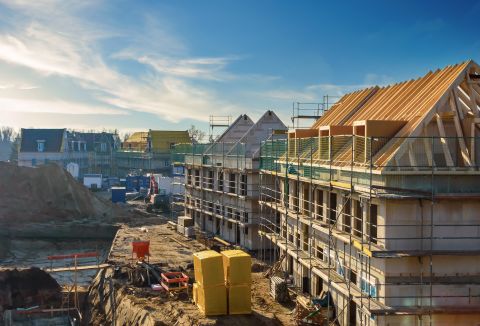Building Regulations in England & Parts L, F and O
With the transitional period now over, the updated 2022 Building Regulations Part L, Part F, and the new Part O, became legally enforceable for all new residential projects.
This is the biggest regulatory change the construction sector has seen in the last 40 years and a stepping stone in our transition away from fossil fuel systems toward decarbonised homes and the electrification of heat - and ultimately, the Future Homes Standard. This shift will impact the way we design buildings and specify technologies.
Have you decided which technologies to specify to achieve compliance for your next residential project?
The new English Building Regulations came into law on the 15th of June 2021. For projects with existing planning permission there is one year transitional arrangements period that applies on plot-by plot basis.
The updated Part L outlines the four compliance metrics for new developments: primary energy target, carbon emissions target, fabric energy efficiency target, and minimum standards for building fabric and building services.
The ventilation system choice under the updated Part F is linked to aritightness as we look to increase indoor air quality. New Part O offers modelling to help mitigate the risk of overheating in buildings.
We designed a simple guide to the changes to Part L and Part F, and the new Part O, and discuss what they may mean for your project.
Our range of HVAC solutions aim to provide future proof technologies to building projects over various sectors.
Request our presentation on Building Regulation changes that answer the most frequently asked questions.
Latest News
Our news section cover building regulations, what the changes to Part L, F, and the new Part of O entail, and what this means for HVAC specification.

What is COP and EER?
The Coefficient of Performance (COP) and Energy Efficiency Ratio (EER) are measures of a heat pump or heating and cooling solution’s efficiency. They indicate a ratio of useful heating or cooling produced by the unit against the energy it consumes. For example, the COP of a heat pump that can provide 3kW of heat against the input of 1kW of electricity is 3. The EER that generates a cooling effect of 12BTU against the input of 1kW of electricity is 12.

How to correctly size an ambient loop heat network using diversity factors
As their name suggests, ambient loops operate at significantly lower temperatures than traditional communal high temperature heating systems. This means that a different approach is required when sizing the ambient loop distribution system. Calculation of such systems follows a procedure where diversity is used to determine the design flowrate for a development. It also determines the sizing of pipework and circulation pumps for an ambient communal network solution such as the Zeroth Energy System. The in-apartment flowrates required for the selected size of the Zeroth Heat Pumps can then be calculated.

Will the outcomes of COP26 significantly speed up the uptake of low carbon technologies?
We are all waiting to see what the real impact will be from the climate summit COP26 for the construction sector, specifically with regard to the decarbonisation of heat. One of the insights that came out of the second day of the summit, which featured a session on clean technology and innovation, was delivered by UK Prime Minister, Boris Johnson:
‘By making clean technology the most affordable, accessible and attractive choice, the default go-to in what are currently the most polluting sectors, we can cut emissions right around the world’.











